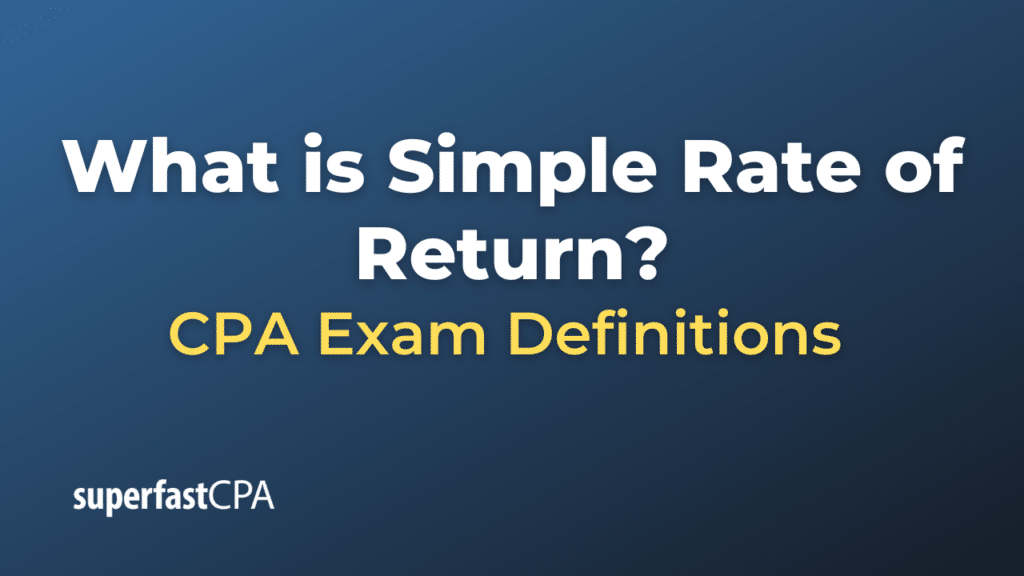Simple Rate of Return
The Simple Rate of Return, also known as the accounting rate of return (ARR) or return on investment (ROI), is a financial metric used to evaluate the profitability of an investment. It calculates the incremental profit expected from an investment as a percentage of the initial investment amount. It provides a straightforward perspective on the potential return of a project without considering the time value of money.
The formula for the simple rate of return is:
Simple Rate of Return = Incremental Annual Profit / Initial Investment
Where:
- Incremental Annual Profit is the additional annual profit from the investment.
- Initial Investment is the upfront cost or investment amount.
Note: While the simple rate of return provides a basic understanding of an investment’s profitability, it does not consider the time value of money, risk factors, or the duration of the investment. For a more comprehensive view of an investment’s viability, other metrics such as the internal rate of return (IRR) or net present value (NPV) might be more appropriate.
Example of Simple Rate of Return
Let’s dive into a practical example to illustrate the concept of the Simple Rate of Return.
Scenario: Renovation of a Coffee Shop
Jane owns a popular coffee shop in the city. She believes that renovating the shop and expanding the seating area can increase her annual profits due to a rise in customer capacity. After discussing it with her interior designer, she estimates that the renovation will cost $50,000.
After one year of operating post-renovation, Jane observes that her net annual profits, attributable to the renovation, have increased by $10,000.
Jane wants to calculate the simple rate of return on her renovation investment to evaluate its success.
Using the Simple Rate of Return formula:
Simple Rate of Return = Incremental Annual Profit / Initial Investment
Given:
- Incremental Annual profit = $10,000 (The additional profit Jane earned due to the renovation.)
- Initial Investment = $50,000 (The cost of the renovation.)
Simple Rate of Return = $10,000 / $50,000
Simple Rate of Return = 0.20
Simple Rate of Return = 20%
Jane’s simple rate of return on the coffee shop renovation is 20%. This means that the renovation brought an additional return of 20% on her investment in the first year.
This example helps demonstrate how a business owner might use the simple rate of return to assess the effectiveness of a capital expenditure, like a renovation, in terms of its ability to generate additional profit.













